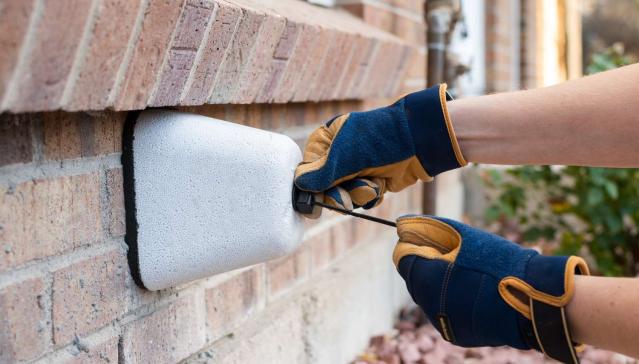Winterize Plumbing

Cold weather can cause significant damage to your home if it isn’t adequately prepared. Even a mild cold front can lead to frozen or burst outdoor pipes and plumbing, resulting in costly repairs and inconvenience.
The good news is that winterizing your home is straightforward, affordable, and far less costly than dealing with the damage caused by broken pipes.
Below, we’ll walk you through the essential steps to protect your home this winter.
Inside
- Winterize windows and doors by inspecting your windows to make sure they are
 properly sealed and cover any holes with a durable caulk or weatherstripping. It’s also important to check the weatherstripping around your door frame and replace it if worn or damaged.
properly sealed and cover any holes with a durable caulk or weatherstripping. It’s also important to check the weatherstripping around your door frame and replace it if worn or damaged. - Check for cracks in and around your walls and seal them with caulk. Although doors and windows are the most likely areas of your home to have cracks and gaps, you'll want to thoroughly inspect your home's interior and exterior portions as you take steps to winterize your house.
- Inspect the roof, clean gutters, and trim trees. Hot air rises, so your roof must be
 properly winterized.
properly winterized. - Insulation in your attic plays a major role in keeping your home warm during the cold days of winter. When winterizing your house, take a peek in the attic to ensure that all the insulation is in good shape.
- Most house fires happen in winter. Test all smoke detectors to ensure they are working and have good batteries. If your home does not have carbon monoxide detectors, consider getting some.
- If winter weather causes any outages, we will send notifications via our Everbridge communication platform. You can also visit our website to see any service outages.
Outside

Sprinkler systems and their pipes can be prone to freezing during winter months. Here are some tips to prevent that from happening. How to winterize a sprinkler system
- Place an insulating dome or foam cover on outdoor faucets, spigots
 , and backflow preventers to reduce the likelihood of water pipes freezing and expanding.
, and backflow preventers to reduce the likelihood of water pipes freezing and expanding. - You can also purchase insulated bags and/or insulated/decorative rocks to protect and conceal above-ground backflow preventers.

- Insulate pipes exposed to the elements or cold drafts with foam insulation. Newspapers, towels, or blankets can also provide insulation, but these items can cause the insulation to freeze if they become wet. Cover them with a plastic bag or tape to keep them as dry as possible.
- We do not recommend using blowtorches, kerosene, propane heaters, charcoal stoves, or other open-flame devices to thaw frozen pipes. We recommend insulating your pipes to prevent this from happening.
Shutting off water during winter can be an excellent idea for those who leave town
 for the holidays or have vacation homes in the service area. If you turn off the
for the holidays or have vacation homes in the service area. If you turn off thewater, leave the faucets on to drain the pipes when the water is turned off.
- This will empty the water plumbing, which could freeze and rupture the pipes.
- However, turn the faucets back to the off position before turning the water back on to the home.
- Preparing irrigation systems for cooler weather in our service area is essential. This short video below provides tips on preparing irrigation systems.


